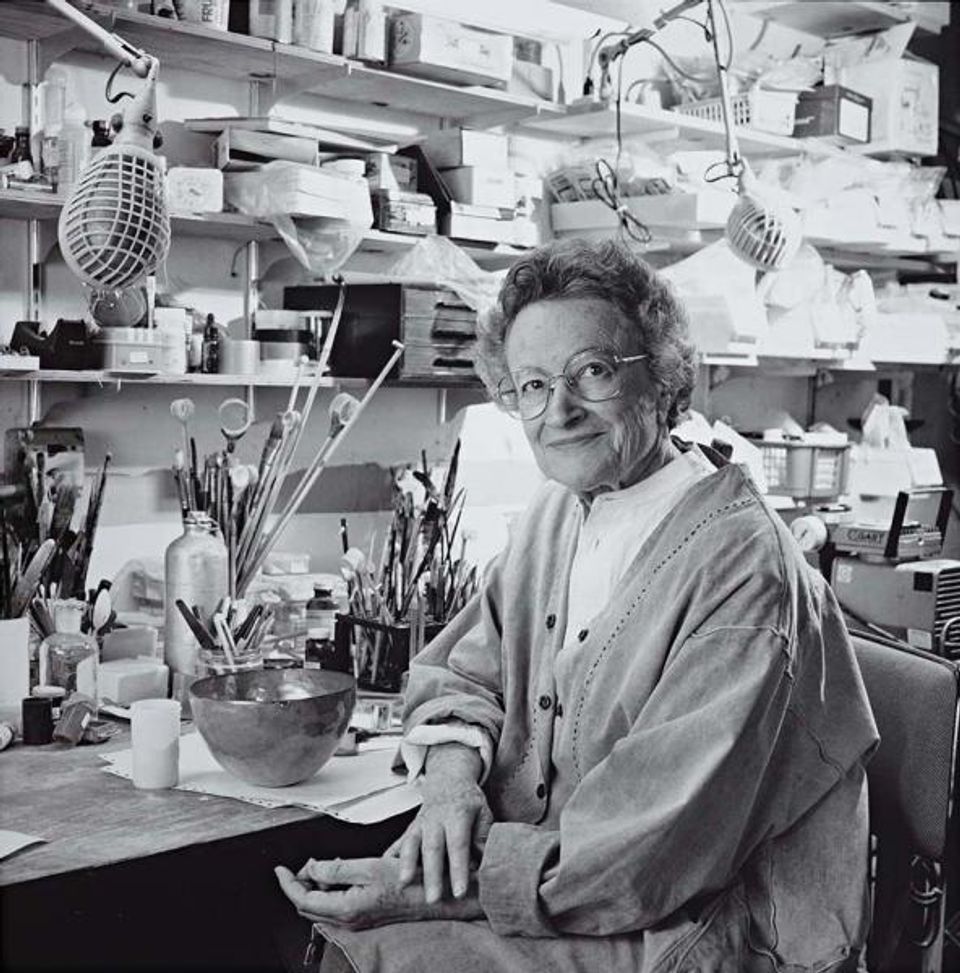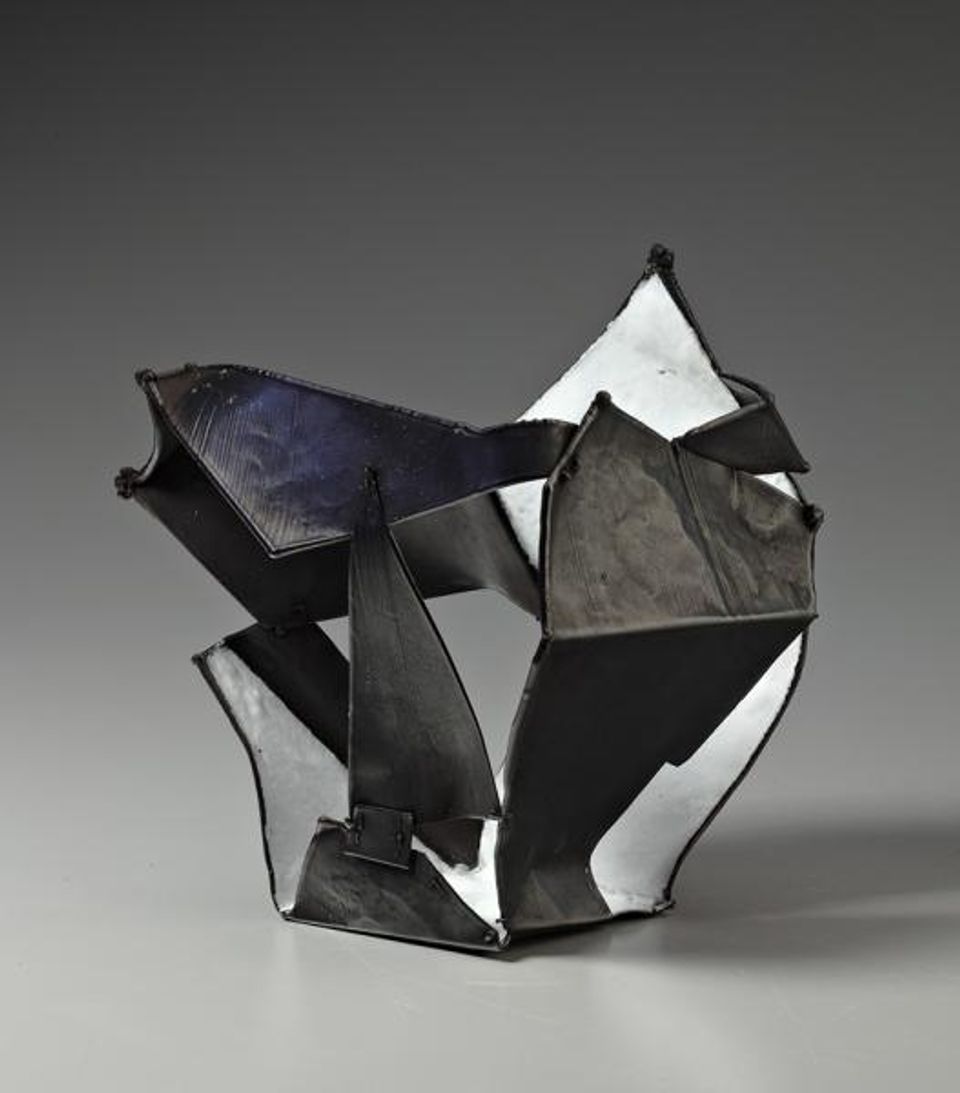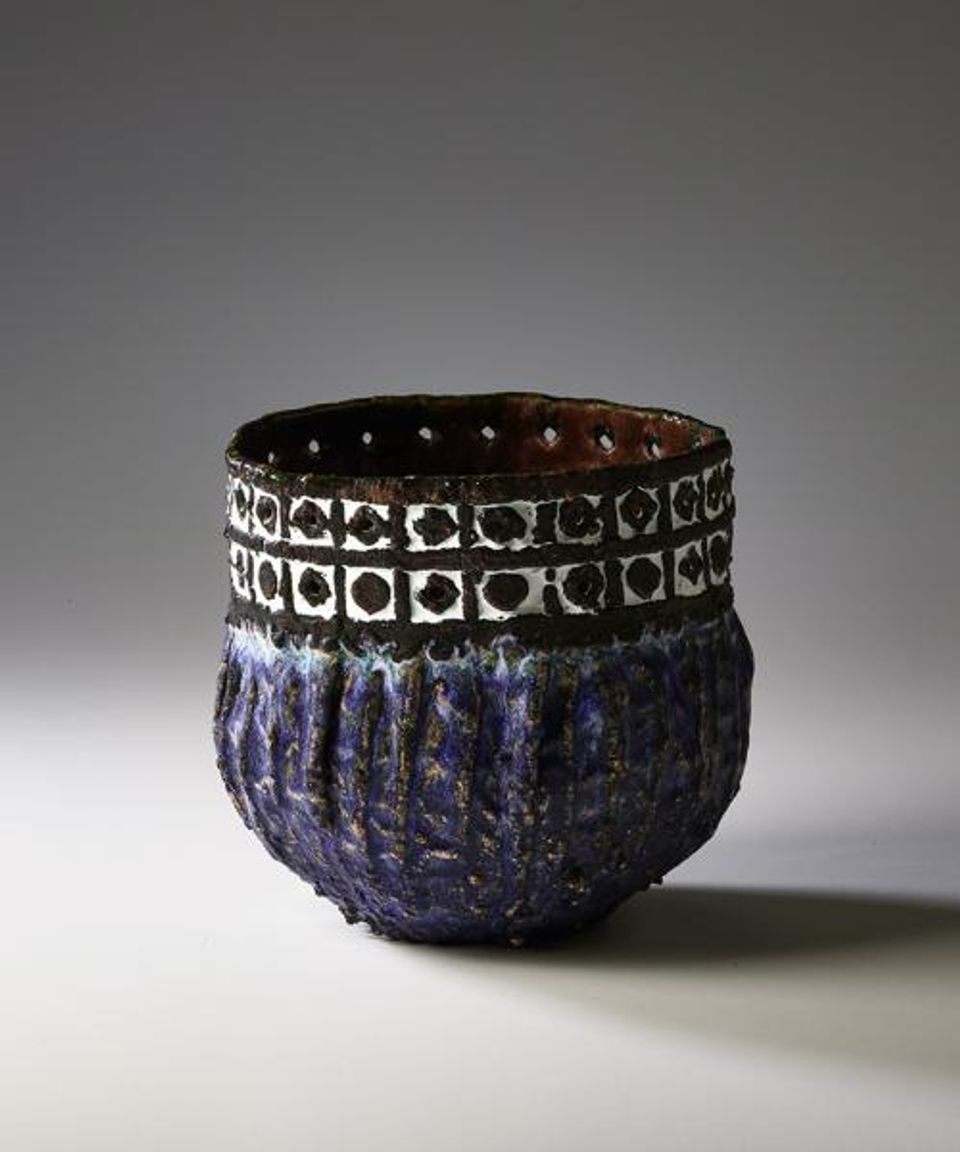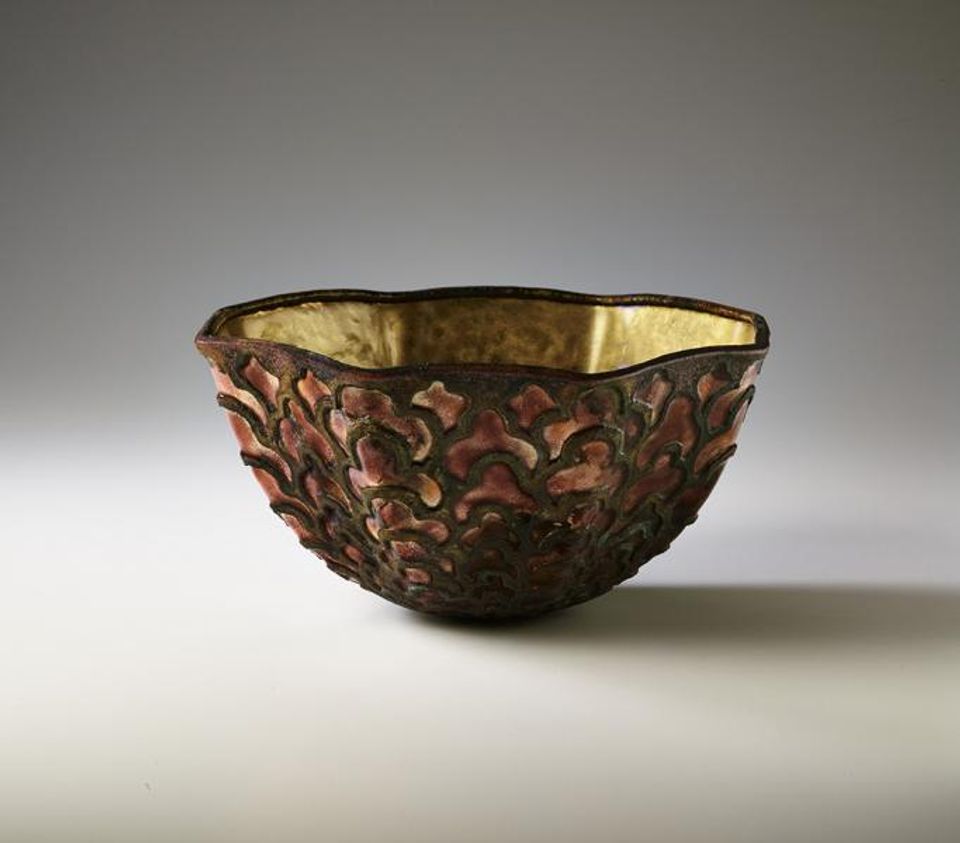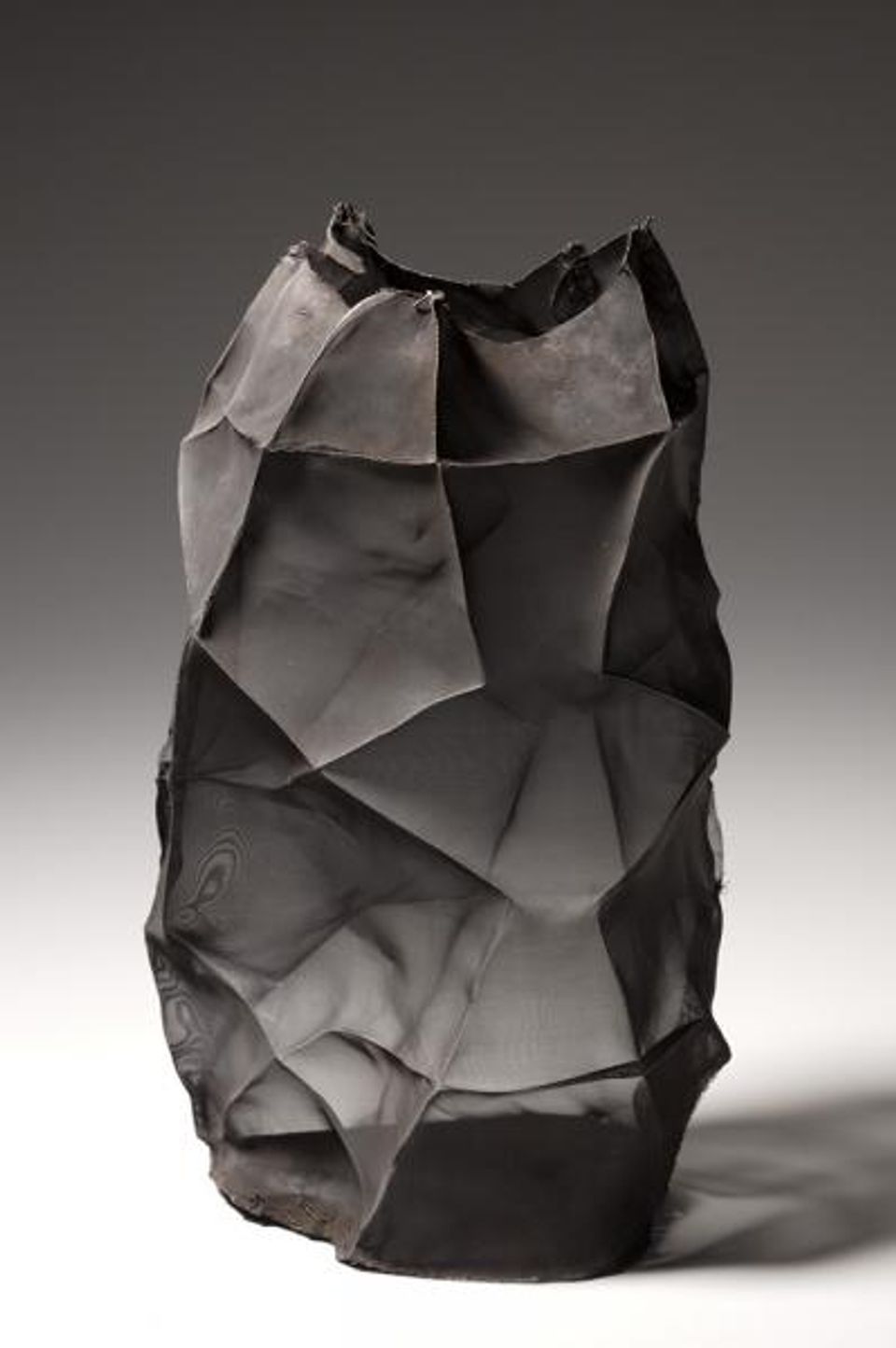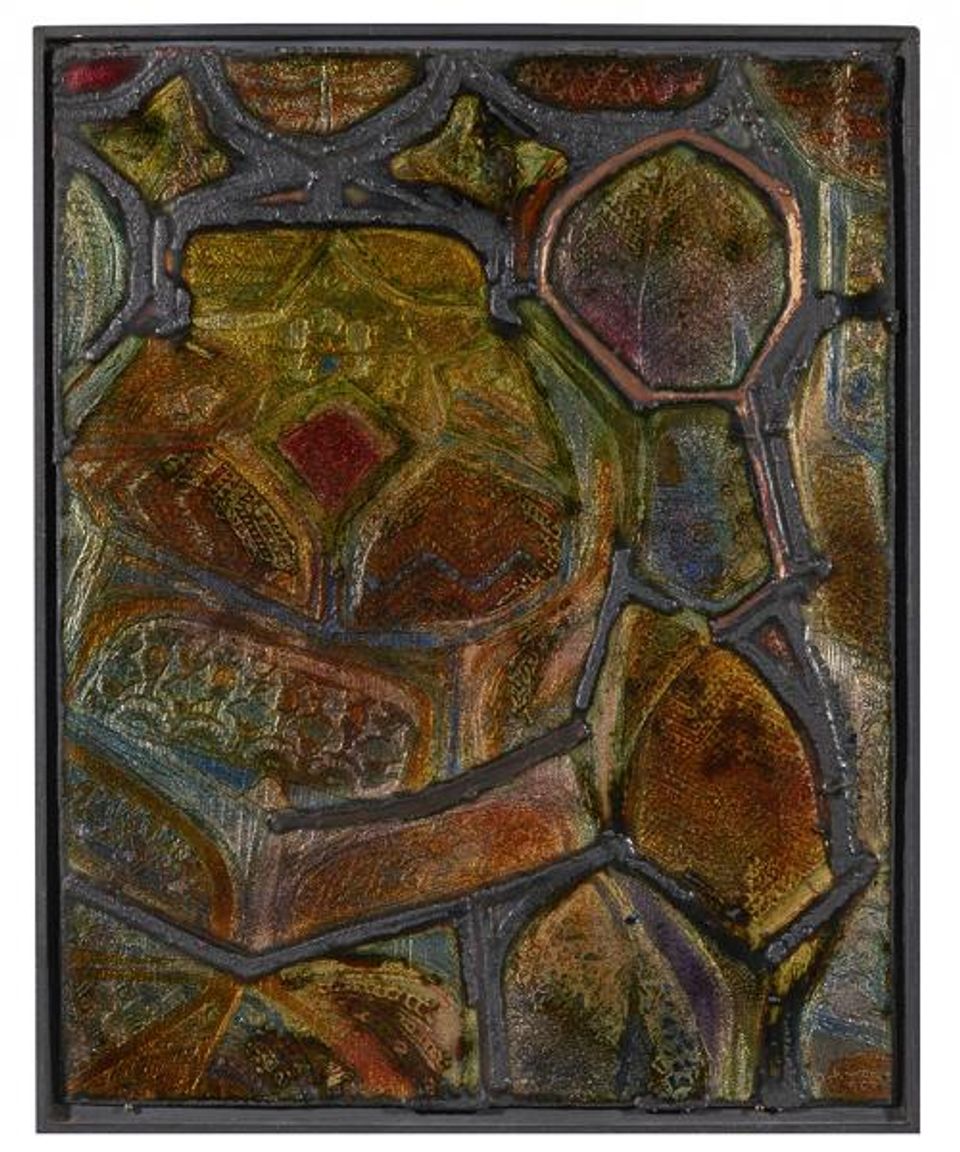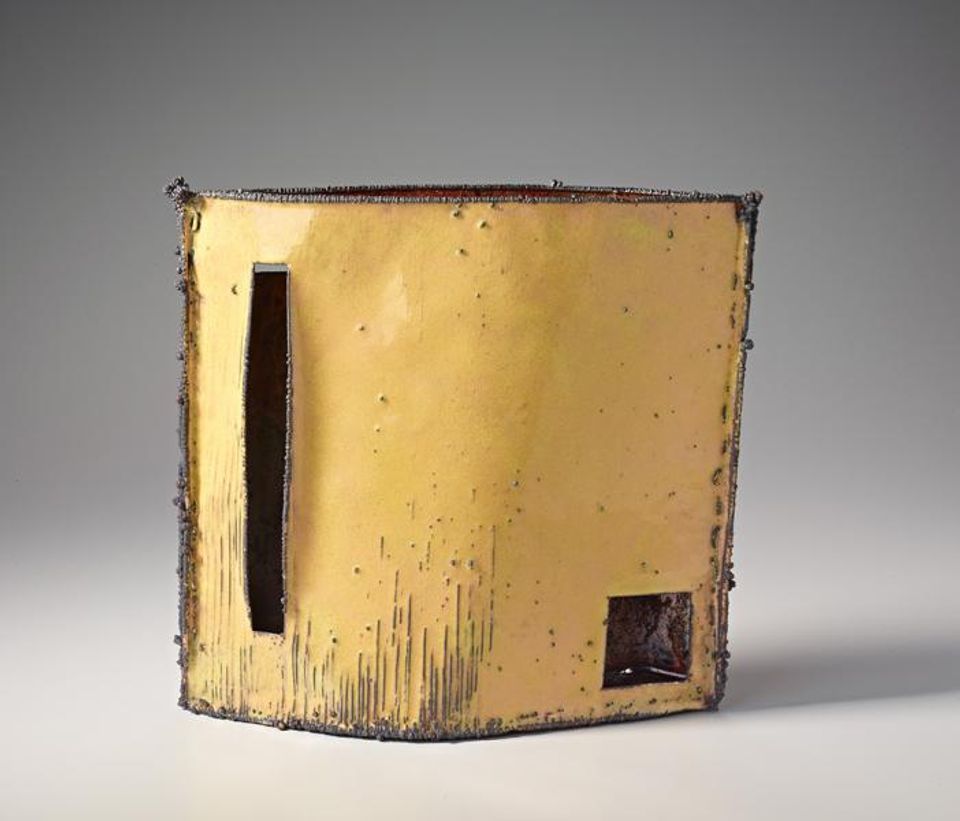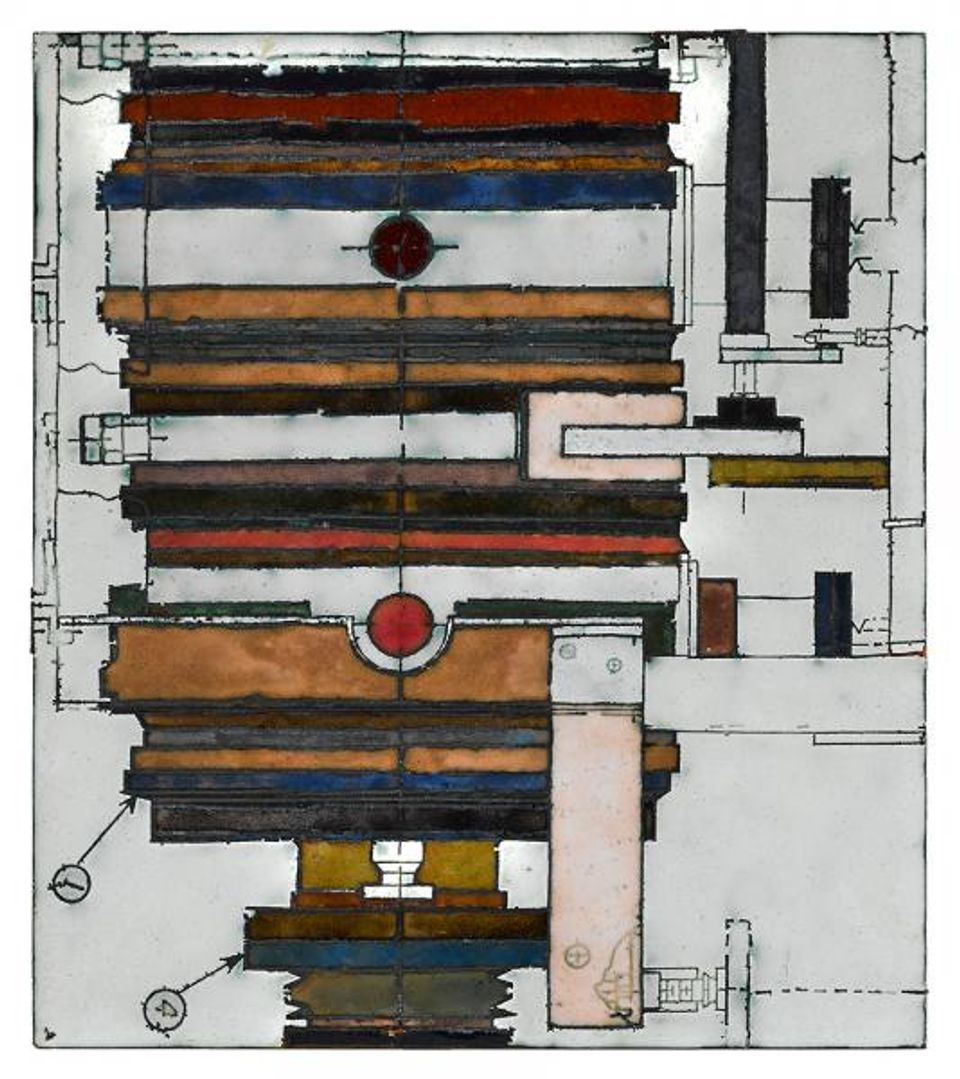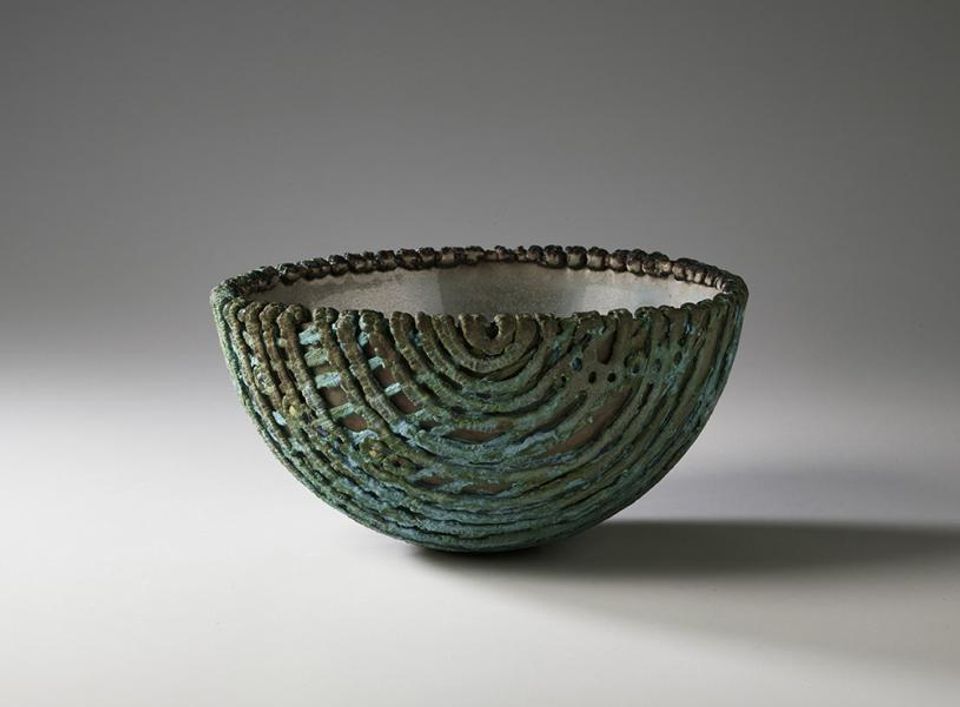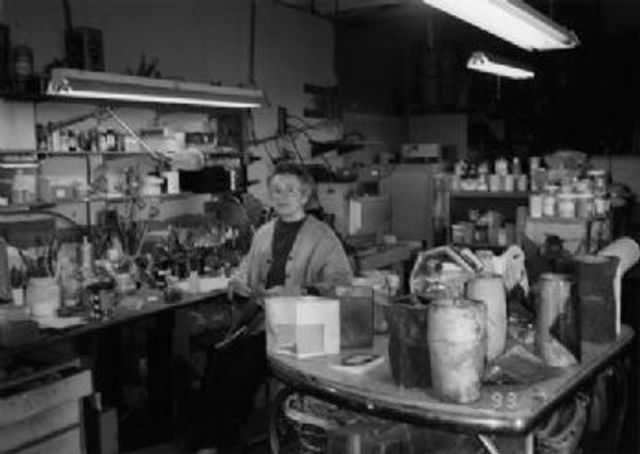June Schwarcz: Invention and Variation
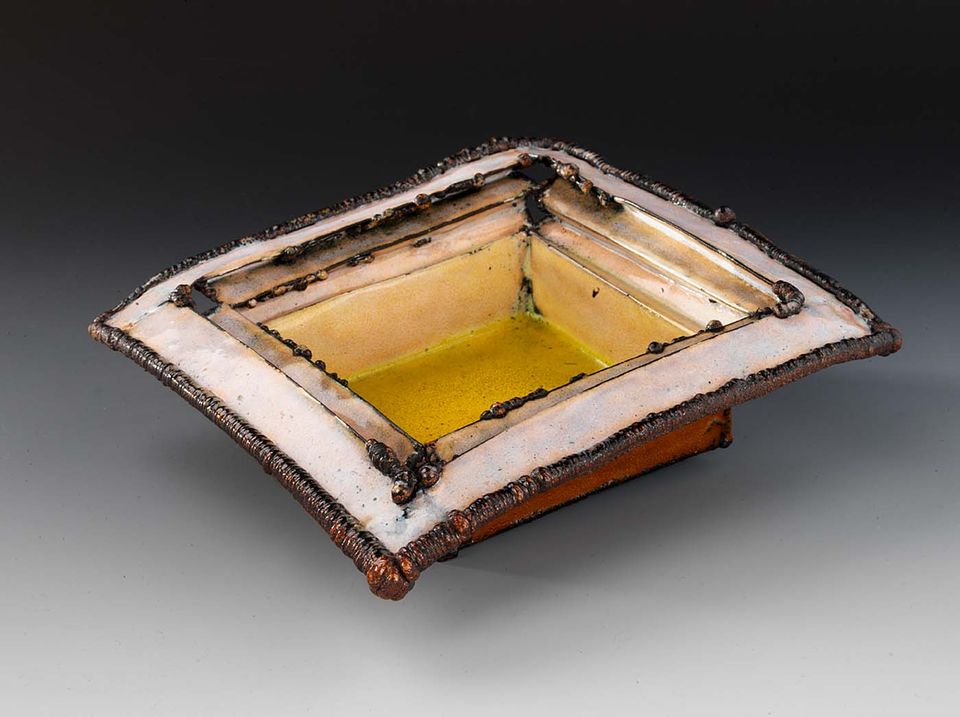
June Schwarcz, Apollo’s Pool (#2025), 1993, electroplated copper foil and enamel. Smithsonian American Art Museum, gift of Kenneth R. Trapp in honor of June Schwarcz. Photo by Gene Young.
Pioneering artist June Schwarcz (1918 – 2015) was one of the most innovative enamelists of the 20th century, creating a remarkably varied body of work over a career spanning more than 60 years. Her technical innovations combined with her inventive and unorthodox designs set new standards for enameling, establishing her as a leading voice in American art who influenced a new generation of artists.
June Schwarcz: Invention and Variation is the first retrospective of Schwarcz’s work in fifteen years and includes nearly sixty artworks, several of which have never been publicly displayed. A wide variety of her forms are on display, from vessels and three-dimensional objects to wall-mounted plaques and panels.
Description
Originally a textile and packaging designer, Schwarcz began enameling in the 1950s. She quickly mastered the medium and began experimenting with materials, defying tradition, and quietly breaking all the rules. She continually broke ground in a field dominated by men and, along the way, created a new vision for enameling and for craft. One of Schwarcz’s most celebrated innovations is her trailblazing work with electroplating and other industrial metalworking processes to build depth and surface variations, as well as to create geometric, three-dimensional vessels unprecedented in the history of enameling.
Schwarcz also defied convention in her aesthetics, which represented a radical departure from tradition. Living in New York, Chicago, Rio de Janeiro and finally settling in Sausalito, California, and a member of artistic circles that included influential figures such as László Moholy-Nagy, Ludwig Mies van der Rohe, Kay Sekimachi, Peter Voulkos, Lillian Elliott and others, she absorbed the worldly, modernist sensibilities around her and translated them into vibrant designs. Her passion for abstract and modern art; costuming and textiles; African, Pre-Columbian and Oceanic art; Romanesque architecture; and Japanese art and design all found expression in her often abstract surfaces and virtuosic use of color and form.
June Schwarcz: Invention and Variation is organized by guest curators Bernard N. Jazzar and Harold B. "Hal" Nelson, leading scholars in the late twentieth-century enamels field and co-founders of the Los Angeles-based non-profit Enamel Arts Foundation; the exhibition is coordinated by Robyn Kennedy, chief administrator at the Renwick Gallery.
Visiting Information
Publications
Videos
Credit
The exhibition is organized by the Renwick Gallery of the Smithsonian American Art Museum. Generous support has been provided by Ruth M. Borun, the Elizabeth Broun Curatorial Endowment, Dorothy Tapper Goldman, the Margot Heckman Endowment for Craft and Decorative Arts, the James Renwick Alliance, the Rotasa Foundation, the Share Fund, and the Elizabeth B. and Laurence I. Wood Endowment.
Online Gallery
Artists
June Schwarcz studied industrial design at the Pratt Institute in New York and worked as a packaging designer for cosmetics and toy companies. She learned to enamel in the 1950s, experimenting with a wide variety of techniques.















